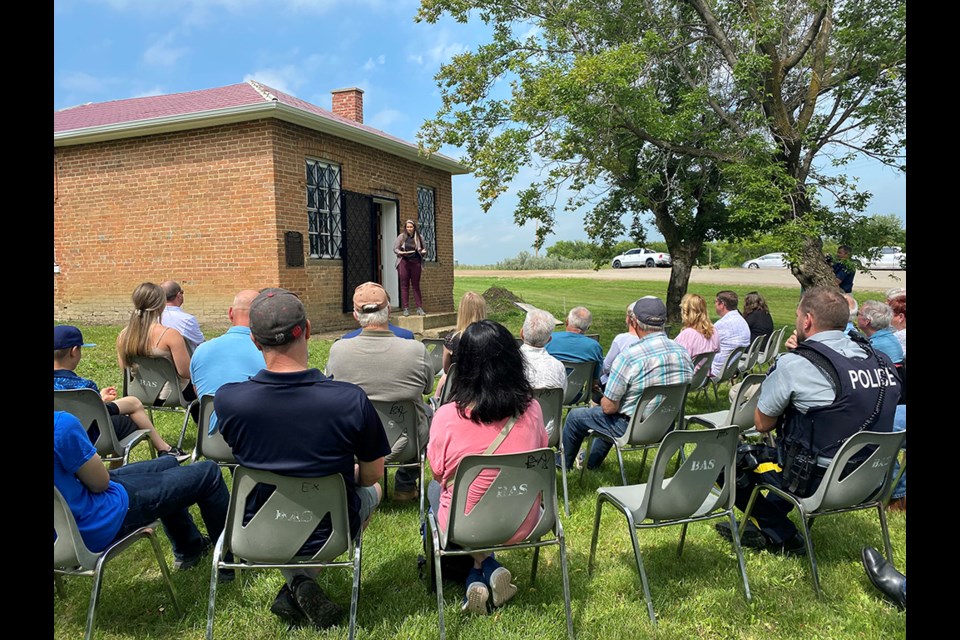BATTLEFORD — Friday ended with thunderstorms and showers, but it was all sunshine and smiles at the grand opening of Saskatchewan Land Surveyors Association Museum earlier in the day.
A vibrant crowd of young and old were in attendance, with many chatting it up outside the museum under the comforting shade of the trees that encompass the surrounding area at the front of the 145 year-old building. The ceremony, originally intended for two years ago (delayed due to the pandemic) was a warm affair for those who have awaited the date.
The building is the first land registry office in the North West Territories, and is consequently known as the oldest brick building in Saskatchewan, having been constructed between 1877-78. It is located near the Battle River on a rise known as Government Ridge, the location of the territory's first government.
While the structure serves as a historical landmark today, it held a variety of purposes over the years. Originally containing the records of all private and public land in the territories, the building was in use for 30 years until a new office was built closer to the business centre of Battleford in 1908. The Town of Battleford acquired the property in 1997.
Among the memorabilia of surveyor tools and technologies include the curta, which is considered the world's first pocket calculator. The device, which is entirely mechanical (no batteries, keypad, etc.), was unrivalled for nearly 30 years before microchips and transistors emerged in electronic calculators in the 1970s.
For Gordon Webster, the one-time president of the association (1983) and now a lifetime member, the changes have been immense. Webster began his career in the field after high school, persuaded by his uncle to come work for the summer; 50 years later, he retired. According to him, the technology used in 1966 was the same as the original equipment used by surveyors in the area decades before, yet over time, the emergence of an electronic measuring system, electronic instrumentation, GPS and drones, have changed the game completely.
Those changes in technology is where Heather Maloney comes in, the current president of the association.
When asked about how surveying has changed, she mentioned how surveying today still retraces the footsteps of original surveyors via the same methodologies, but the technology behind the “art of measurement” has altered.
Maloney comes from a long line of affiliation with the association, as her uncle, father, then brother all served as president, before her taking over of the reins.
For Maloney, education is a big component of the association’s goal to preserve its heritage, as there is a shortage of land surveyors and technicians in the field today.
One of the goals of the association is to have a plethora of classrooms visit the building, in order to see the latest land-scanning technologies, but also to understand the past way surveying was conducted.
For those wanting to check out the museum, it is open six days a week from 10 a.m. to 4 p.m. Check out https://www.slsa.sk.ca/ for any additional details.





